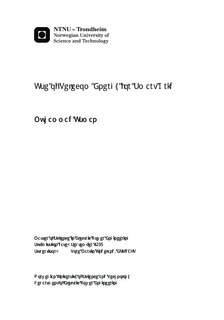Use of Telecom Energy for Smart Grid
Master thesis
Permanent lenke
http://hdl.handle.net/11250/257715Utgivelsesdato
2013Metadata
Vis full innførselSamlinger
- Institutt for elkraftteknikk [2443]
Sammendrag
With increasing electricity demand and environmental concerns, utilities are looking for improved network operations and efficient energy consumption. Telecom sites with their flexible energy storage and controllable power flows have significant potential to improve reliability, efficiency, security and quality of electricity supply in the AC distribution system.Power quality events such as voltage sags, flickers and energization of power devices cause disturbances in the operational grid. Moreover, extensive use of power electronics devices requires additional reactive power from the grid and cause distortion in the source current waveforms. These power quality problems were identified both from the literature studies and measurements obtained from Sintef Energy, a research organization in Norway. Line rectifiers are being used as grid/utility interfaces for the telecom sites. In this master thesis, an idea is proposed to replace rectifiers with bi-directional AC/DC converters. Operational control schemes for up-to three converters have been developed with the help of vector control technique. These converters with the battery banks on DC side; are not only capable of supplying power for telecommunication services but also of providing the possibility of voltage support, harmonics and reactive power compensation. Basic distribution network models were developed in the software package MATLAB/SIMULINK® to analyse the impact of connected telecom converters both for the voltage support and ancillary services. Simulations were performed and it was observed that the Total Harmonic Distortion (THD) was reduced to maximum 3.4%, reactive power drawn from the grid became zero and voltage dip in case of wind distributed generation rises from 83.5% to 97.5% when three Telecom sites started supporting the grid. It was also seen that with proper energy management system, Telecom sites can also support utilities by supplying active power during peak hours load demand and for islanding operation.THD level within the IEEE, IEC, EN power quality standards, compensation of reactive power and provision of voltage support prove that the efficiency of a network can be improved by properly implementing Smart Grid together with the support from distributed telecom sites. Keywords: Smart Grid, power quality issues, Telecom Power Infrastructure, power electronics, voltage source converter, vector oriented control, harmonics, active and reactive power, voltage support.
